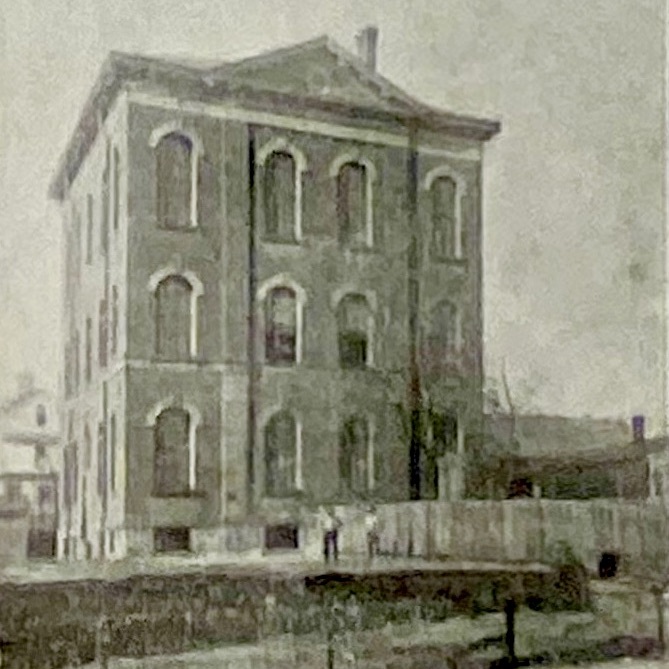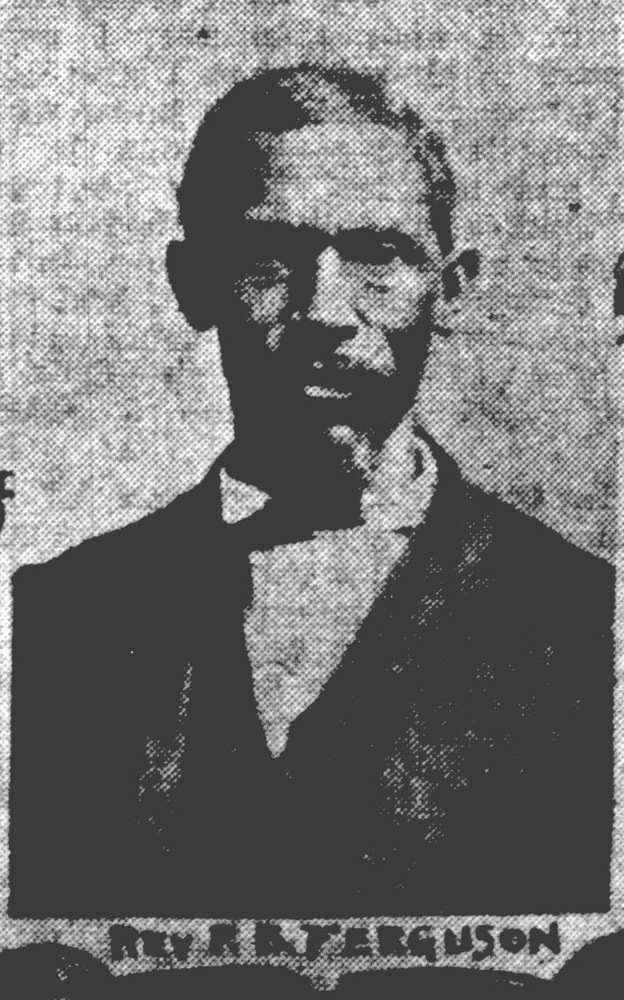Elm Street School Site
A Hannaford-designed school with a Black construction supervisor: Philip B. Ferguson

Philip B. Ferguson was born into slavery in Virginia in 1824. He somehow acquired his freedom, and he came to Cincinnati, where he became a Baptist minister. Ferguson was also a builder and construction supervisor.
In May 1871, the “Colored School Board” solicited proposals for construction a schoolhouse on Walnut Hills. The design was by Samuel Hannaford. The clerk of the board noted that “Plans and specifications can be seen at this office.” The site was on Elm Street, now called Alms Place.
Philip B. Ferguson submitted a bid to construct the school for $26,500, but his bid was rejected as being too expensive. The board chose another builder, Thomas Mullen.
While Philip B. Ferguson was neither the design architect nor the primary contractor for this building, he was hired to supervise the construction. An article in the Cincinnati Commercial for May 31, 1872 notes that one of the speeches at the dedication ceremony was by “Mr. P. B. Ferguson, who was the supervising architect of the building.”
So far, this is the earliest-known instance of an African American being described in a Cincinnati newspaper as an architect. (Later sources identify two earlier African American architects, Joseph Dorcus and Peter Harbeson, but neither was noticed by newspapers at the time.)
The Elm Street School no longer exists. It was renamed the Frederick Douglass School (later called “old” Douglass), and then in 1910 it was torn down for the erection of a larger Douglass School, which in turn, was torn down to make way for the current Spencer Educational Center.
Philip P. Ferguson later played important roles in the construction of several other buildings, none of which has survived. In 1880, P. B. Ferguson received a building permit to build “four two-story brick houses, southeast corner of Chapel and Willow streets, $4,000.”
In 1894-5, Ferguson supervised construction of the Union Baptist Church on Mound Street in the West End. This time, the design architect was Arthur Giannini. The Cincinnati Commercial Gazette notes that “Rev. P. B. Ferguson was unanimously chosen as Superintendent of the building. Mr. Ferguson is a practical builder and a boss carpenter.” When the church was dedicated in July 1895, Ferguson presented the keys of the completed church to the building committee.
And in 1903, Philip B. Ferguson was the builder of a sanctuary for the First Baptist Church of Walnut Hills. Their previous building had been condemned. So Philip Ferguson and Louis Bowen “tore the old church down with great care. They marked every usable piece of timber that could be … used in the erection of the new frame church to be built on Lincoln Avenue near Park Avenue.” These timbers were apparently used to build a small, wooden building, close to the current church but now gone.
The most interesting thing, however, about Philip B. Ferguson, is his earlier career: he was a conductor on the Underground Railroad.
In 1900, the Cincinnati Commercial Tribune wrote this about him: “Venerable Elder Ferguson, now living at 1017 Foraker Avenue, Walnut Hills, was long a slave at Fredericksburg, Va., but reached this city in freedom about 1850. He succeeded Elder Shelton at Zion Church, and later preached for years in Clermont County. His active rescue work covers a period of about ten years in this city. Numerous are the mobs he remembers and the famous court cases involving the fate of fugitive slaves, which he always attended.”
The Commercial Tribune article says that Ferguson “assisted in the escape of the negro Lewis from a Federal Court room during his trial,” a famous case in Cincinnati. And then the Tribune discusses the trial of Margaret Garner, which Ferguson also attended. The article describes how Garner was acquitted for murdering her child but was then returned to her enslaver. Philip B. Ferguson, we learn, “took the dead child along and buried it in Kentucky.”
Images

